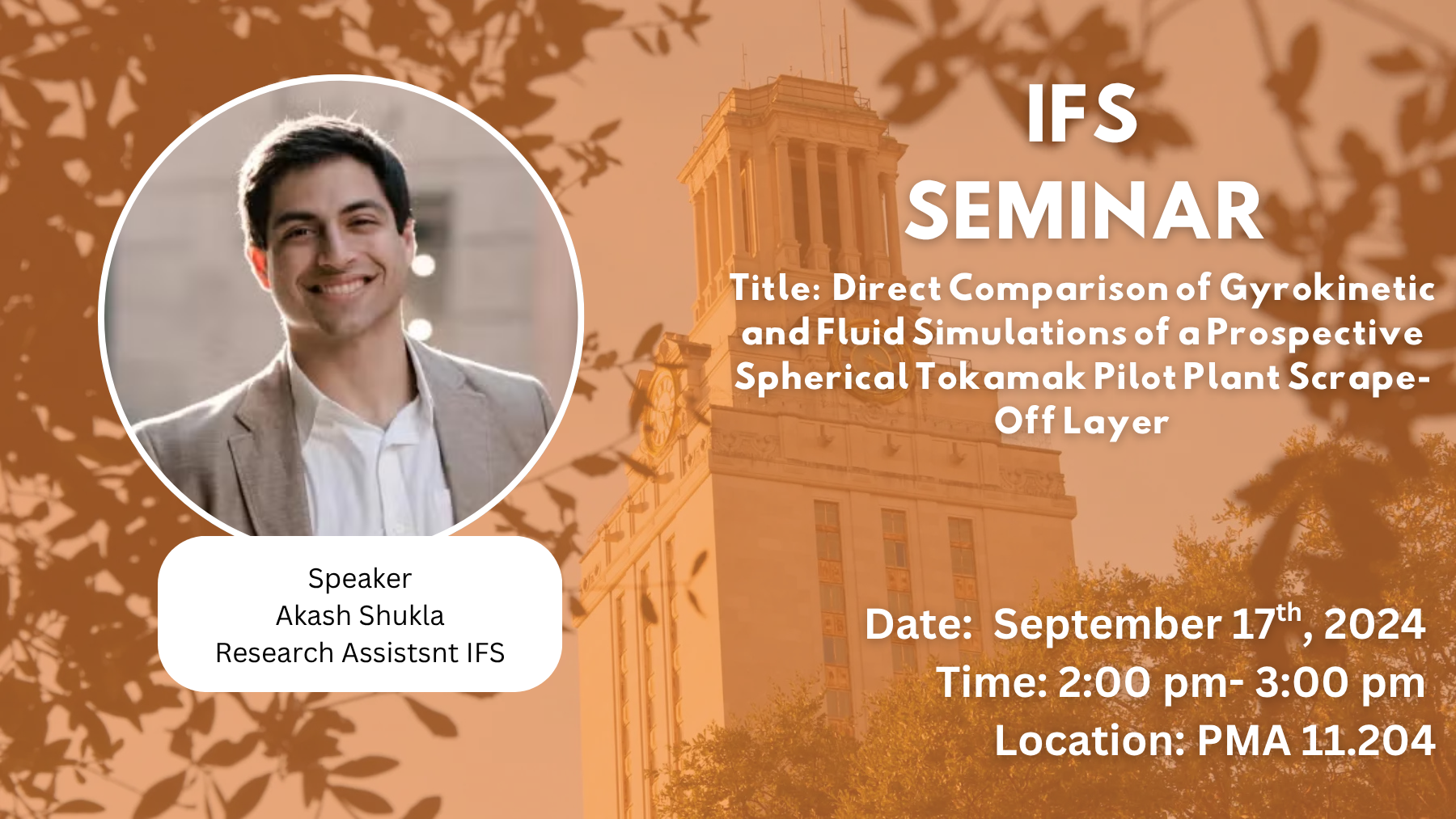IFS Seminar
Sep
17
2024

Tomasz Zajda/stock.adobe.com
Sep
17
2024
Description
Typically, fluid simulations are used for designing divertors for power handling and helium exhaust, and to study the dynamics of the Scrape-Off Layer (SOL) in tokamaks. These simulations are only valid if the SOL is highly collisional, but this assumption can break
down in a reactor SOL, even in a high recycling regime. We find that kinetic effects can be significant in the upstream SOL in some reactor-relevant cases.
We conducted SOL simulations with parameters representative of a spherical tokamak pilot plant using a gyrokinetic code, Gkeyll [1, 2, 3], and fluid code, SOLPS. Simulations exhibit significant ion trapping in the upstream SOL when upstream parameters typical of
a high recycling regime are used. The trapping becomes extreme for low recycling regime upstream parameters.
Of particular interest is confinement of impurities to the divertor region. In order to maintain good confinement, it is important that impurities remain confined to the target and do not reach the core. We show that the mirror force, which is excluded in SOLPS’s form of fluid equations, enhances the electrostatic potential drop along the field line in the SOL. We also show that the assumption of equal main ion and impurity temperatures, which is made in commonly used fluid codes, is violated. The combination of these effects results in superior confinement of impurities to the divertor region in kinetic simulations, consistent with our earlier predictions[4]. This effect can be dramatic, reducing the midplane impurity density by orders of magnitude. This indicates that, in reactor-like regimes, larger downstream impurity densities may be possible while still avoiding unacceptable core contamination than one would think based on SOLPS results.
Location
PMA 11.204
In-person only
No Zoom meeting
